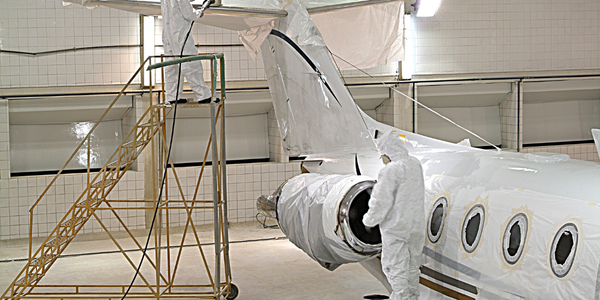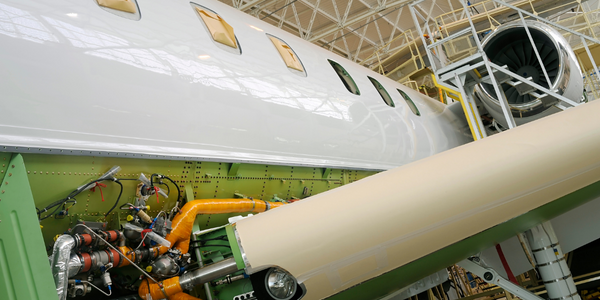公司规模
SME
地区
- America
国家
- United States
产品
- E2 Manufacturing Software
技术栈
- AI
实施规模
- Enterprise-wide Deployment
影响指标
- Productivity Improvements
- Cost Savings
技术
- 应用基础设施与中间件 - API 集成与管理
适用行业
- 航天
适用功能
- 离散制造
用例
- 自动化制造系统
服务
- 软件设计与工程服务
关于客户
Volume Machine 是一家位于加利福尼亚州范奈斯的小型 CNC 车间,专门从事航空航天工业。该公司自 1999 年以来一直在使用制造软件 E2。由于实施了 E2,该公司经历了显着增长,并能够克服许多障碍。尽管增长迅速,但该公司正试图放慢脚步,专注于为良好的目的制造优质的机器零件。该公司的目标是在业务中实现控制和精确性,而 E2 多年来为他们提供的知识使这一目标成为可能。
挑战
Volume Machine 是一家位于加利福尼亚州范奈斯的小型 CNC 车间,专门从事航空航天工业,自 1999 年以来一直在使用 E2。制造业以动荡的周期性而闻名。借助 E2,他们可以灵活应对这些变化。由于只需单击按钮即可访问每一点信息,因此团队可以快速确定哪些当前工作和哪些前景最适合他们的日程安排和目标。挑战在于实施一个可以处理制造业周期性并提供适应变化的灵活性的系统。
解决方案
Volume Machine 的解决方案是实施制造软件 E2。E2 使公司能够灵活适应制造业的变化。该软件用户友好且直观,使团队能够轻松快速地确定哪些当前工作和前景最适合他们的日程安排和目标。该软件还具有一个容错工具,可以轻松纠正错误。该公司的总裁兼创始人理查德·阿诺德 (Richard Arnold) 最初不愿意使用该软件,但在看到其在库存、订单和主运输纸箱交付跟踪方面的效率后,他相信了它的价值。
运营影响
数量效益

Case Study missing?
Start adding your own!
Register with your work email and create a new case study profile for your business.
相关案例.

Case Study
Airbus Soars with Wearable Technology
Building an Airbus aircraft involves complex manufacturing processes consisting of thousands of moving parts. Speed and accuracy are critical to business and competitive advantage. Improvements in both would have high impact on Airbus’ bottom line. Airbus wanted to help operators reduce the complexity of assembling cabin seats and decrease the time required to complete this task.

Case Study
Aircraft Predictive Maintenance and Workflow Optimization
First, aircraft manufacturer have trouble monitoring the health of aircraft systems with health prognostics and deliver predictive maintenance insights. Second, aircraft manufacturer wants a solution that can provide an in-context advisory and align job assignments to match technician experience and expertise.

Case Study
Aerospace & Defense Case Study Airbus
For the development of its new wide-body aircraft, Airbus needed to ensure quality and consistency across all internal and external stakeholders. Airbus had many challenges including a very aggressive development schedule and the need to ramp up production quickly to satisfy their delivery commitments. The lack of communication extended design time and introduced errors that drove up costs.

Case Study
Accelerate Production for Spirit AeroSystems
The manufacture and assembly of massive fuselage assemblies and other large structures generates a river of data. In fact, the bill of materials for a single fuselage alone can be millions of rows of data. In-house production processes and testing, as well as other manufacturers and customers created data flows that overwhelmed previous processes and information systems. Spirit’s customer base had grown substantially since their 2005 divestiture from Boeing, resulting in a $41 billion backlog of orders to fill. To address this backlog, meet increased customer demands and minimize additional capital investment, the company needed a way to improve throughput in the existing operational footprint. Spirit had a requirement from customers to increase fuselage production by 30%. To accomplish this goal, Spirit needed real-time information on its value chain and workflow. However, the two terabytes of data being pulled from their SAP ECC was unmanageable and overloaded their business warehouse. It had become time-consuming and difficult to pull aggregate data, disaggregate it for the needed information and then reassemble to create a report. During the 6-8 hours it took to build a report, another work shift (they run three per day) would have already taken place, thus the report content was out-of-date before it was ever delivered. As a result, supervisors often had to rely on manual efforts to provide charts, reports and analysis.

Case Study
Developing Smart Tools for the Airbus Factory
Manufacturing and assembly of aircraft, which involves tens of thousands of steps that must be followed by the operators, and a single mistake in the process could cost hundreds of thousands of dollars to fix, makes the room for error very small.








